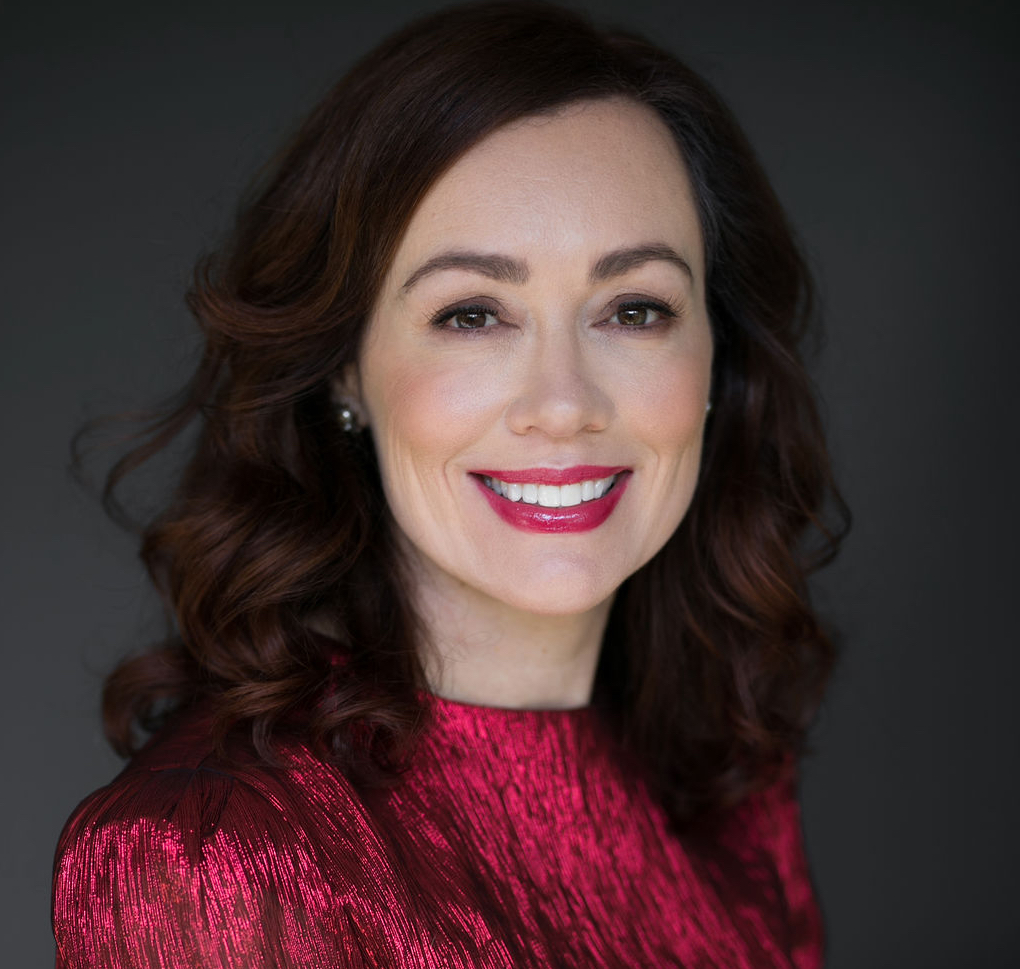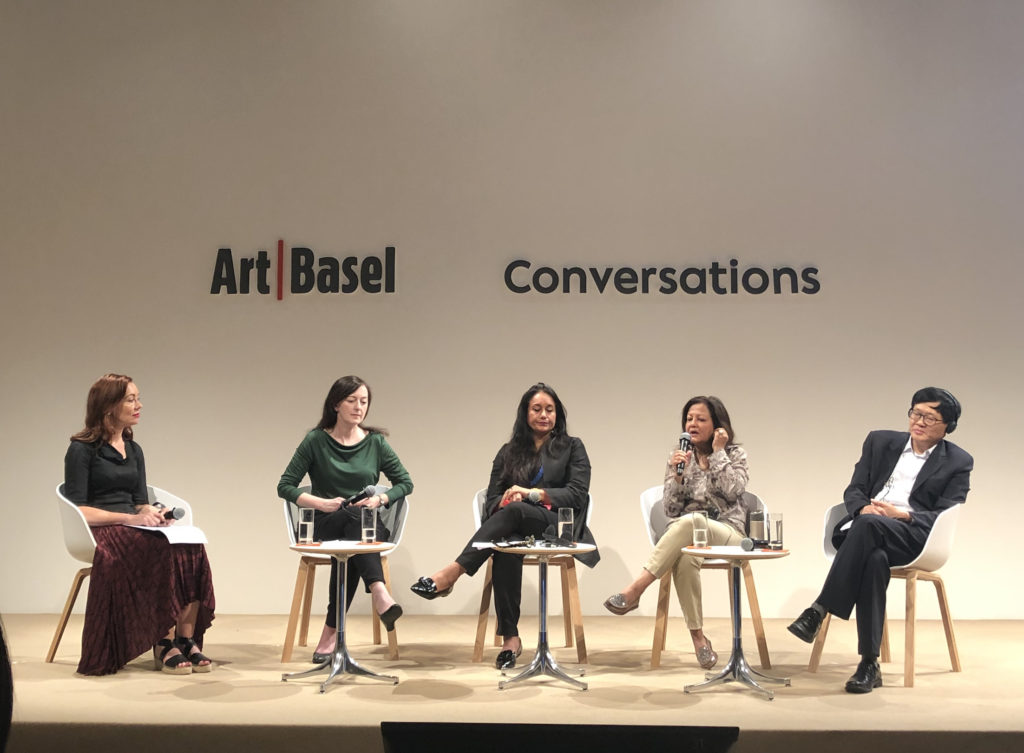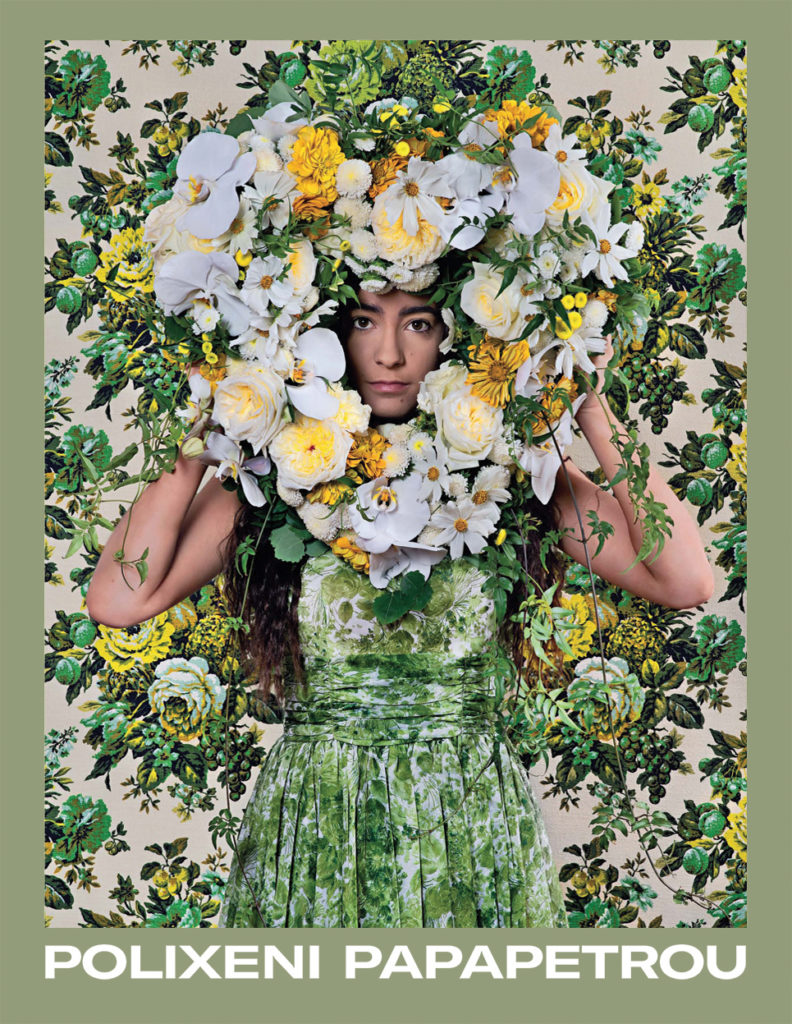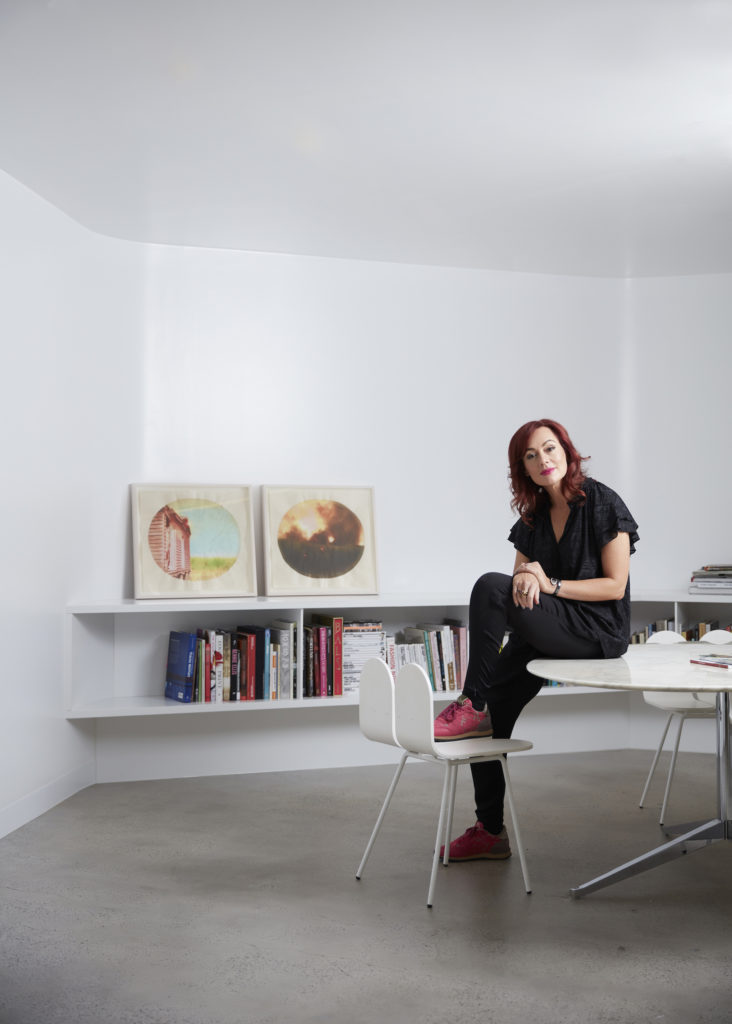Natalie King, a new paradigm of leadership

Natalie King is a visionary thought leader, curator, writer and cultural producer. With more than two decades of contributing to international visual culture, her approach brings momentum to a new paradigm of creative collaboration and stewardship. Natalie King is at the forefront, having curated Tracey Moffatt for the Australian Pavilion at the 57th International Art Exhibition, Venice Biennale 2017 and was Chief Curator of Melbourne Biennial Lab, the Creative Associate of MPavilion. Through her writing and projects, she is skilfully weaving new avenues for Australian artists to take their place on the international stage. In this conversation, Claire Bridge speaks with Natalie King for Art world Women.
CB: I’ve heard you speak of the word ‘curator’ as originating from the term “to care”. What does this mean for you in your role as cultural producer, curator and writer? How does this understanding inform how you work and shape your relationships with artists, communities and institutions?
NK: The etymology of the word “curator” comes from the verb “curare” which means to take care and I see my role as caring for artists and ideas. I like to work as an enabler to artists and creatives ensuring that they are provided with sufficient capacity and conditions to thrive. Often, I mediate between institutions, funders, audiences, press and technical crew but I always turn to relationships rather than jobs as connector, facilitator and producer. Ultimately, my role is to be an accomplice to artists who are guardians of the imagination.
For me, exhibition making is part of a broader creative remit that seeks optimum scenarios for artists. By rethinking format, whether the exhibition, allied programmes, publication, residency, workshop, colloquia; are all part of a larger conversation with artists approached as already activated social agents who can truly flourish when given proper support and challenging venues, or non-venues for the production and reception of their work.

Siddhartha Arts Foundation and Kathmandu Triennale, Nepal;
Lu Peng, Artistic Director, MOCA Yinchuan, China.
Recently, I moderated a Masterclass with curators Sara Cluggish, Director of FD13 Residency for the Arts in Minneapolis and Pavel Pys, Curator of Visual Arts, Walker Art Center with CoVA (Centre of Visual Art) which you attended where the role of care and self-care was at the heart of the discussion. The creative sector is in distress with irregular hours, unpredictable work flows, isolation, varying labour conditions and unremitting pressures. I have been thinking about how we might care for each other, our communities and ourselves in times of unprecedented upheaval and uncertainty. Good mental health is needed for creativity.
Ultimately, my role is to be an accomplice to artists who are guardians of the imagination.
-Natalie King
Lately, I have been pondering the idea of collective commons especially since the Indonesian artist-collective Ruangrupa has been selected to curate documenta 15. This certainly marks a momentous pivot towards Asia and collective approaches. What does it mean to share ideas and work collectively? How can ideas coalesce? How can one voice reverberate among many? How can we hear each other amidst the cacophony of distractions and within a world of tumult?
CB: They are powerful and provocative questions that can be truly paradigm transforming. Amidst the chaos, what are some of your core interests in terms of themes, artists and or artistic practices?
NK: That’s an interesting question as varying concerns pique my interest at different times. I try to read widely from poetry, to biographies and articles in the New York Times as well as cinema. For example, I am currently reading the love poems of Dorothy Porter, watching the film Burning,which is based on a Haruki Murakami short story (one of my favourite Japanese authors) about alienation and aloneness and reading Behrouz Boochani’s harrowing account of exile and life on Manus Island No friend but the mountainalongside a steady pile of art books and magazines.
I have also been listening to public lectures by the feminist sociologist Eva Cox. We have a parallel family history as Jews who fled Europe. Her father married the pianist Hephzibah Menuhin, the sister of violinist Yehudi Menuhin. Eva has said that it was her stepmother “who helped me to care about others. It was she, and my mother, who taught me that women should not be silent and complicit with unfair use of power, neither in the household nor in the wider world.” Some believe that Hephzibah was a more talented musician with a wide repertoire, yet she was relegated to a more subsidiary role. Slowly, very slowly, women are emerging especially the number of more senior, overlooked women artists who are starting to be recognised such as Hilma Af Klimt, Carolee Schneemann who I met when she won the Golden Lion in 2017 and Romanian artist Geta Bratescu, to name a few.
So there are many influences that coalesce. If I look back on my work, however, I have focussed on contemporary Indigenous artists having curated Destiny Deacon’s monographic survey for the MCA and artists such as Fiona Hall, Christian Thompson, Michael Riley, filmmaker Ivan Sen and more recently Tracey Moffatt: My Horizon for the 57thVenice Biennale 2017. I also have a long history of co-curation with Aboriginal activist, writer and curator, Djon Mundine OAM and hope this might contribute towards cultural reconciliation.

CB: Your work takes you across the globe. I saw that you recently participated in the 4th Kochi-Muziris Biennale and at Art Basel Hong Kong. What are some of the trends or areas of global interest you are noting? What stands out for you?
NK: In January, I visited the 4thKochi-Muziris Biennale as an extension of a family sojourn in India. I am developing a partnership with the President, artist Bose Krishnamanchari, but it’s form and outcome is evolving. Sometimes I wait for projects to unfold, not knowing their destination and savour the relationships, conversations and ideas that percolate along the way. I reviewed the biennale and I think it’s one of the most dynamic events in the region. It is always curated by an Indian artist allowing for a perspective inwards and outwards that is important.
For the first time, a female curator – Anita Dube – has been at the curatorial helm and she conflates more senior (sometimes overlooked) female artists such as US activist collective the Guerrilla Girls, Martha Rosler, alongside folkloric and contemporary artworks; all sit side by side in a riveting symphony of materials and ideas. One of the highlights was Nilima Sheikh’s five-panel painting that is an ode to Malayali nurses who tend to the sick; once again depicting the role of care. The biennial was both tender and prescient presented across ten warehouse and former maritime venues that face out onto the Arabian Sea.
This year, I was fortunate to participate in the Conversations program at Art Basel Hong Kong, moderating a session with four colleagues who I hadn’t previously met: Qudsia Rahim, Executive Director, Lahore Biennale Foundation; Lu Peng, Artistic Director and Curator, MOCA Yinchuan; Sangeeta Thapa, Kathmandu Triennale and Anne Barlow, Director, Tate St Ives. Based in Lahore, Yinchuan, St Ives and Kathmandu, the panel heralded reorientations towards localised places or non-traditional centres, with specific forms of public mediation.
I try to listen to the murmurings and whisperings, of artists that aren’t loud, to utterances across cultures and communities
-Natalie King
Often, I return to Okwui Enwezor’s pivotal essay for the 2008 Gwangju Biennale where he discusses the notion of proximity to various artistic scenes in near and far flung corners of the globe and being alert to cultural murmurings. Multiple changes and realignments are opening up huge cultural seams within traditional circuits of power to reveal the emergence of new ones. as the idea of centres and mainstream become part of the anachronism of the cultural politics of the past, artists and curators have oriented themselves not towards centres and mainstreams, but towards a more transversal process of linkages, networks, and diverse communities of practice. I am intrigued by these creative and community realignments and how these places have initiated nascent biennials/triennials, providing new regional perspectives and geo-political influences.
CB: How do you see Australia engaging with the world stage, both in terms of what is happening here and how Australian artists and art practitioners such as yourself are participating internationally? Does the tyranny of distance still impact artists involvement in a global artworld?
NK: While Melbourne is my home where I live with my husband and three children, I can be anywhere in 24 hours, so I try not to view distance as tyrannical. We are fortunate to be incredibly mobile and agile, responding to opportunities in near and far places. I do think that we need to develop a more strategic approach across tiers of local, state and federal government to ensure that Australian artists are more prominent and resourced to participate in the international arena.
CB: You are currently Enterprise Professor in association with the Victorian College of the Arts (VCA) and University of Melbourne. What does this role entail and what are some of the projects you are undertaking?
NK: I enjoy being based at an art school with students and emergent ideas. There is also tremendous adjacency with the National Gallery of Victoria, MPavilion, parks and Federation Square nearby so I feel part of a creative enclave. Southbank is also undergoing tremendous transformation with the opening of Buxton Contemporary and I am a member of their exhibition committee and can play a role in shaping a new kind of institution. As Enterprise Professor, I instigate new alliances for the university such as micro-residencies with the Biennale of Sydney and Asia Pacific Triennial whereby artists visit VCA for short intensive visits and encounters with faculty, students and wider audiences.
CB: What is most important to you as a curator and what are some of the aspects of your work that you are most passionate about?
I hope my work in Asia and with Indigenous artists has resonated. There are many ways in which artworks speak that aren’t necessarily loud: they can whisper and can have resonance. I try to listen to the murmurings and whisperings, of artists that aren’t loud, to utterances across cultures and communities that might be overlooked or quiet.

CB: What are some of the areas or gaps that you see need to be addressed for both artists and curators in order to meet some of the challenges of evident gender discrimination in the Arts?
NK: There is important data and advocacy being undertaken especially by Elvis Richardson with her COUNTESS statistics about gender inequity. But we need to mobilize further and make sure that women take up positions of influence on boards, with funders, as advocates and champions. I mentor for Mentor Walks and remember our conversation when you joined a walk and talk around the Queen Victoria Gardens at dawn tackling problems collectively, outdoors and with other women.
I have just taken up a new role as Series Editor for Thames & Hudson on a new series of books called Mini Monographs that will feature a female artist. The first tranche will be released this month with a book on Del Kathryn Barton and the late Polixeni Papapetrou. The publications highlight images in a non-chronological sequence accompanied by a short essay by an author from a parallel field. The playwright, Joanna Murray Smith contributed a touching and powerful essay on Polixeni as they were close friends. This adds an extra frisson. Polixeni was also a close confidante who I worked with as part of the 2014 TarraWarra Biennial: Whisper in My Mask and the Dong Gang International Photo Festival, Korea. I consider myself lucky to have a coterie of close female allies.
We must remember that we aren’t aspiring to the existing paradigm of leadership but are making a new one. And, we have an obligation to steward our creative resources for the betterment of a faltering society.
– Natalie King
The female leaders I know are inclined to build support systems, nurture talent, create opportunities, and hold visions that illuminate the way. We are leaders with incredible capacity to build inspired, collaborative working environments that can lead to transformation in our fields and beyond. We must remember that we aren’t aspiring to the existing paradigm of leadership but are making a new one. And, we have an obligation to steward our creative resources for the betterment of a faltering society.

CB: I wholeheatedly agree. I am so inspired in this new paradigm of leadership created together and I must mention that you were named for your leadership in The Australian Financial Review 100 Women of Influence awards for Arts, Culture and Sport in October 2018. You are fearless in your approach. On our walks, we’ve spoken together about courage and what it takes to go for the big vision. What is on your horizon?
NK: Thank you. Like most people, I have experienced vulnerability and uncertainty, but I try and put one foot in front of the other and forge my own path. This has led to unexpected forays. I have never had a career roadmap and sometimes the detours have been the most compelling professional diversions. I am confident that what’s next will eventually find its way, it always does despite the fleeting panic after one project finishes.
CB: What advice would you give to artists?
I like the words of Louise Bourgeois, often quoted by Tracey Moffatt: “I do, I undo, I redo”, which essentially means to never give up. It’s also a good idea to find a mentor!
See also Natalie King on wikipedia
Author: Claire Bridge
Feature image: Natalie King, Curator, Photo: Alli Oughtred
No related posts.